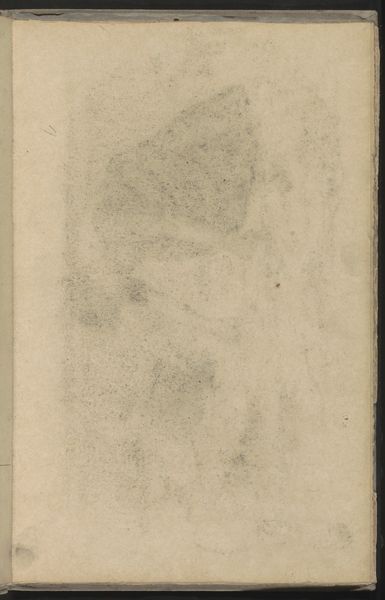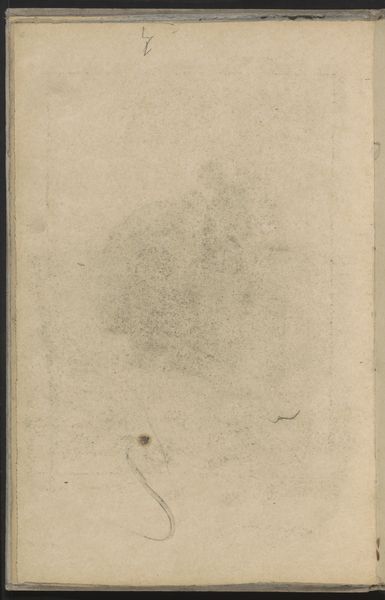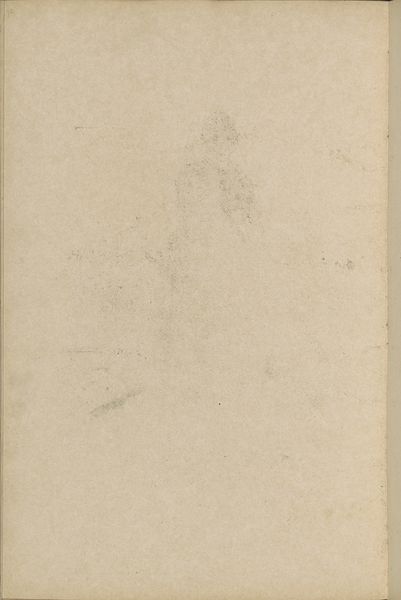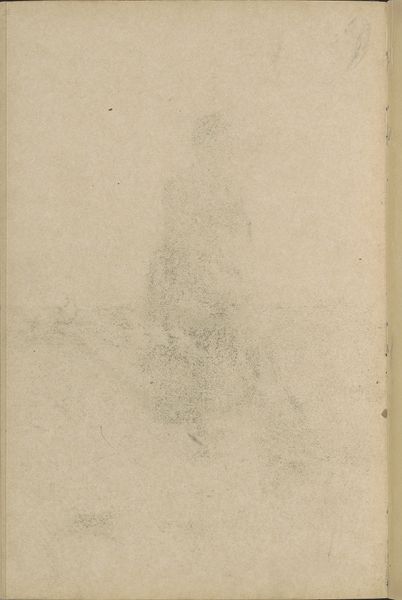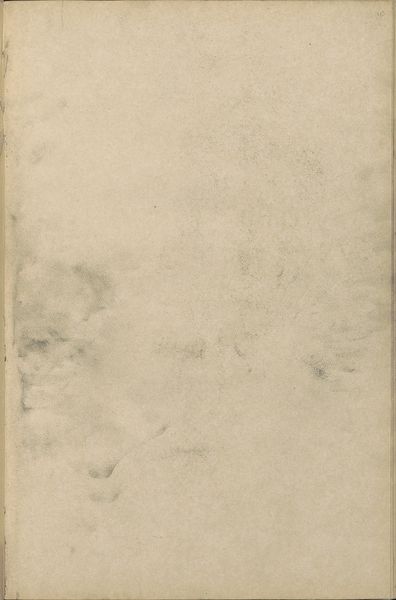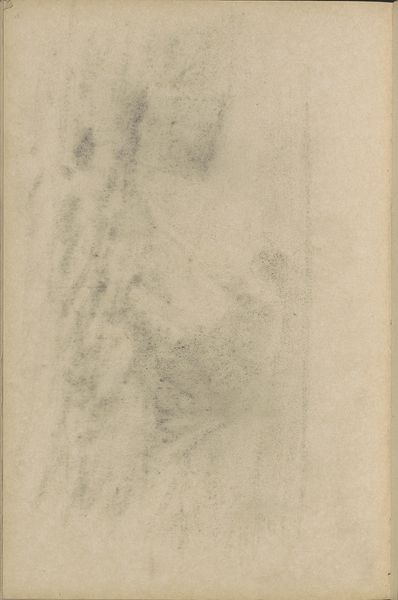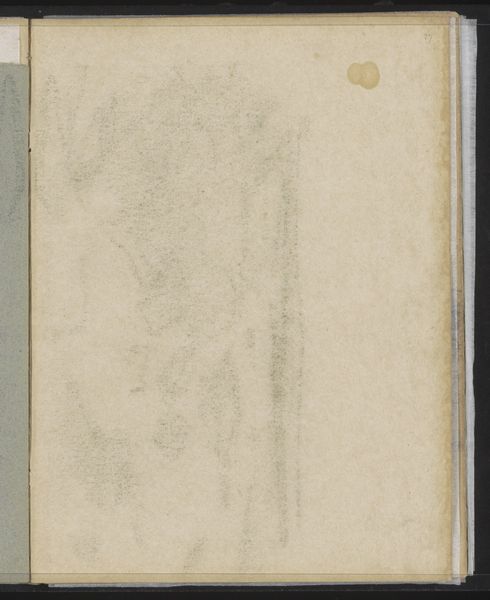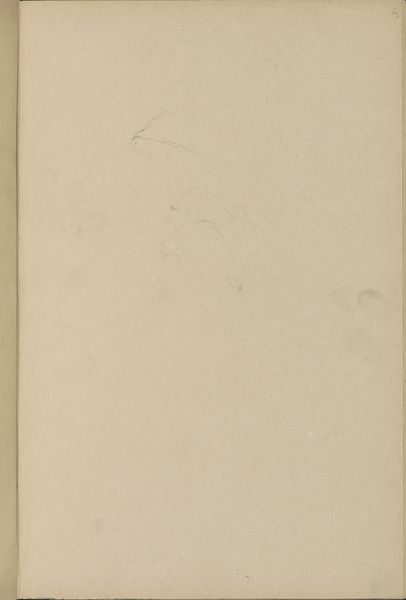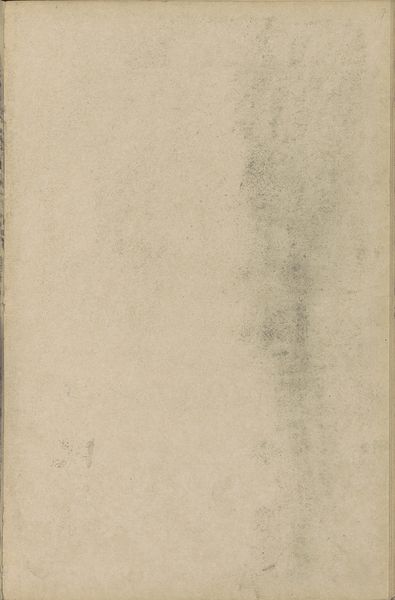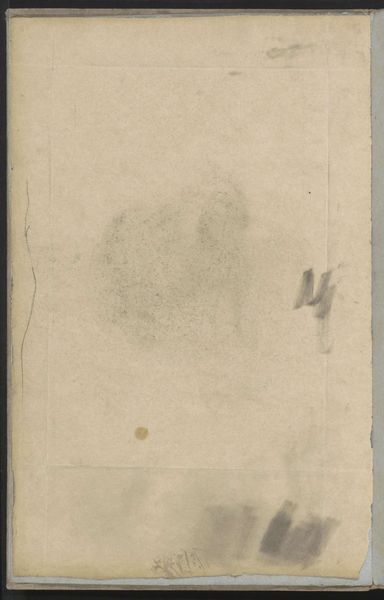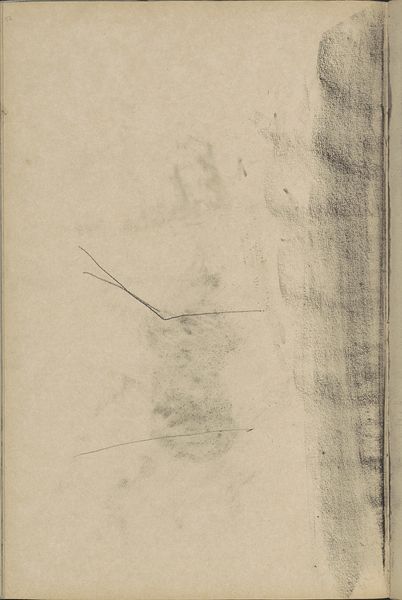
drawing, paper, pencil
#
portrait
#
drawing
#
self-portrait
#
impressionism
#
paper
#
pencil
#
monochrome
Copyright: Rijks Museum: Open Domain
Curator: At the Rijksmuseum, we find a compelling self-portrait by Willem Witsen, "Abklatsch van de tekening op pagina 20", dating from approximately 1884 to 1887. Executed in pencil on paper, it presents an intriguing study in monochrome. Editor: The sketchiness immediately strikes me. The smudged pencil gives it a ghostly, almost ethereal feel. It seems incomplete, raw. Curator: Indeed. Witsen masterfully utilizes the tonal range of graphite to create a subtle, almost veiled effect. Note the contrast between the darker, more defined areas and the lighter, more ambiguous ones—how would you interpret the subject? Editor: What interests me here is not only the result but also the potential traces of the working process. What pencils were available to Witsen and the type of paper on hand likely defined the mood that you pinpoint. It offers such intimate contact with Witsen’s moment of creation, as his hand touched these materials. Curator: Certainly. Yet, observe the meticulous arrangement of the lines, forming a recognizable, though abstracted, likeness. One can discern the curve of his jaw, the suggestion of his eyes. It hints at Impressionism, doesn’t it? It privileges atmosphere. Editor: Yes, though one could read this atmospheric touch also through the labor of wiping away or reshaping what was there. These kinds of works invite speculation. It's a physical record of thought, decision-making embedded into paper. We can trace the artist's steps through the densities. Curator: Perhaps this "raw" effect enhances the emotional directness? Or it suggests an emotional withdrawal? What feelings arise when engaging the sketch? Editor: I'm not sure it communicates an intent as such, just his way of engaging in daily craft and life. More than revealing an intentional expression, it may convey an intrinsic desire, or need, to represent his identity at that very time. Curator: Precisely. The artwork prompts these introspective explorations of form, process, intention, and self. Editor: This piece, and works like it, underscore art's connection to labor, challenging established art perceptions by highlighting creative choices, skills, and even resource accessibility. Curator: Well, whatever conclusion one makes, it undoubtedly proves to be a striking demonstration of skill, even in apparent incompleteness.
Comments
No comments
Be the first to comment and join the conversation on the ultimate creative platform.
